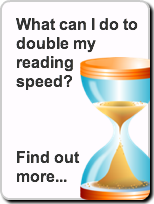I was interested to read the results of a recent survey carried out by GMX into the use of email in the UK workplace.
The headline conclusion was depressingly familiar: over a third of workers have been offended or upset after misinterpreting the tone or language used in emails received from colleagues.
The medium and the message don't match
And it’s depressingly familiar because the cause is so common: the mismatch between the delivery medium and the communication’s purpose. In such cases, it’s inevitable some people will get inappropriately written messages and become offended.
What do I mean exactly by this mismatch? In my view, email was intended for (and should really only be used for) quick messages and updates. In reality, it’s now used for almost every kind of business communication. Are we going to turn the clock back and encourage billions of users to only use email ‘correctly’? Hardly likely.
Not all emails should be treated equal
Is there a solution? Potentially, yes. If you are using email for anything other than short, basic communications, you need to treat it with the seriousness you give to report writing.
Just like report writing, you need to have a clear view of your audience and the information they need to know. Just like report writing you need to have a clear outline structure before your fingers hit the keyboard. Just like report writing, you need to pay a great deal of care and attention to the language and vocabulary you are using.
Audiences should apply caution, too
But there is another aspect the GMX survey revealed: one in ten workers said they expected a response to their email on the same day, while a third claimed they get offended if they haven't received a reply with 48 hours.
So it’s not just writers who need to be mindful of the medium and the message – which brings us back to some interesting comparisons with reports. Audiences wanting speedy responses have a tendency to skim read email content and make instant judgments. Before you know it, they are firing off a reply that causes offence and bad feeling. So the cycle continues.
Reports and emails: contratsing approaches
By contrast, if you receive a report (long or short) you’ll probably do more than skim read it. You’ll probably give it some thought. Any response you make is likely to be considered and measured. Similar content delivered in an email, however, is likely be read in haste. You’ll probably be bashing the keyboard within minutes of receipt.
The basic problem: we have fallen in love with a technology and we are using it in ways it was never intended to be used. This is highly unlikely to change. What can change, though, is the ability of both readers and writers to treat some emails differently from others. If it’s short instant content that’s ideal for email – go ahead, speed away. If it’s anything else, both readers and writers should give it the time and consideration they would give to a report or a more complex piece of content.








